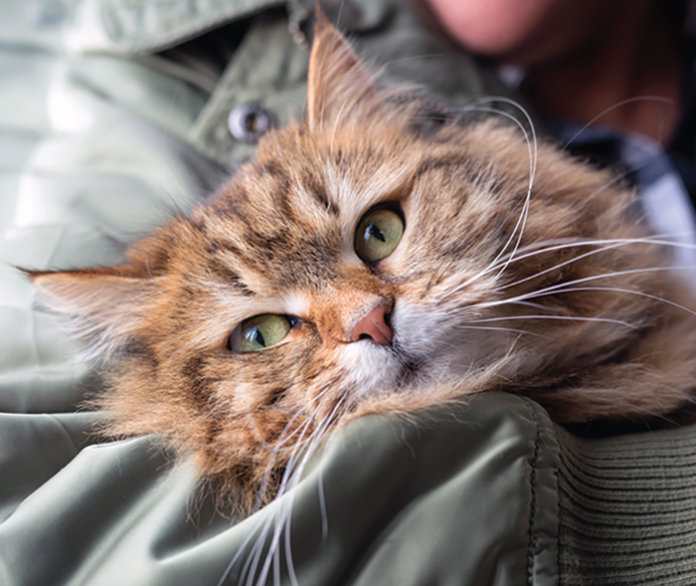The worst part of owning and loving a cat is that their lives are so much shorter than ours. For many of us, there will come a point when our veterinarian delivers the devastating news that our beloved cat has an illness that cannot be treated and is likely to lead to her demise. In this article, we discuss some things to consider when deciding how to make the most of the remainder of your cat’s life.
Comfort
“Owners and their veterinarians should make sure to manage pain, nausea, appetite, and hydration,” says Leni K. Kaplan, MS, DVM, of the Small Animal Community Practice Service at Cornell University. Keeping your cat comfortable will help to make her final days as good as possible.
A variety of medications can help control pain and nausea and stimulate your cat’s appetite. Your veterinarian will consider your cat’s case to determine the best medication choices, but don’t hesitate to bring up any concerns you have and to clarify your priorities. For example, many non-steroidal anti-inflammatory drugs can be hard on the liver and kidneys, so for a cat with kidney disease, you may need to choose between pain control and prolonging your cat’s kidney function.
Nausea can be difficult to assess in cats, so bring up any odd symptoms or behaviors that your cat shows at home to give your veterinarian a complete picture. The decisions and medications that are best for one cat may be completely different from those for another.
Making sure that your cat is eating and drinking will promote her overall well-being. If she has been on a special diet for one or more of her health conditions, you may need to choose between the diet that is healthiest for her and one that she is willing and able to eat. Sometimes a middle ground can be found with a diet that both addresses some of her unique needs and is palatable to her. Add water to her food to increase water intake, or flavor her water with some low-sodium chicken broth or a little bit of tuna juice.
Treatment Decisions
“Considerations focus on the cat’s quality of life,” says Dr. Kaplan. “Our goal in caring for these terminal patients is to minimize suffering, and clients and veterinarians need to make sure that most (if not all) of their efforts are focused on what is in the cat’s best interest. Owners should decide what lines they will draw regarding stopping treatment as the patient approaches the end of their life. Major considerations include how much and what the cat will tolerate (we do not want to push therapies on the patient if these treatments are a source of stress for the pet) and how much or what is the owner willing and able to do (we do not want to cause stress for the owner).”
Try to find a balance between keeping your cat happy and prolonging her life. For example, some cats with kidney disease tolerate subcutaneous fluids well, making it an option for either at home or in the hospital. Other cats get upset and try to get away. For cats in the latter group, the stress of giving fluids may not be worth the benefit of the fluids.
It is important to consider your feelings and limitations. Dr. Kaplan says, “Owners should be aware of and discuss with their veterinarians whether or not they are feeling guilty about stopping treatment or resentful of their pets. Understandably, owners will get frustrated with repeated episodes of house soiling or cleaning up vomit, and new discussions and decisions should be made at these times.”
How you are feeling about your cat and her health status ties into her quality of life—if you are stressed and overwhelmed with the treatments or managing her condition, she will likely be more stressed as well.
Environmental Management
It may be necessary to change some things around at home to make your cat’s routine easier. “Some of these pets may be weaker,” says Dr. Kaplan. “Make sure they have easy access to food, water, and litter boxes. Owners may need to invest in new, shorter litter boxes to facilitate cats getting in and out of the box. If their cats have a favorite place in which they like to sleep or spend time, consider getting small stepping stools or ramps, as many of these patients do not have the strength, balance, or mobility to jump.”
If you have multiple pets, monitor how the healthier animals treat your ill cat. If she is being pushed around, she may need to be kept separate from the others to prevent injury. Make sure she gets some special one-on-one time with you each day so she doesn’t feel left out.
Alternative Therapies
Dr. Kaplan recommends a few alternative therapies that may be beneficial for a cat with a terminal illness. She says, “I recommend owners consider acupuncture if their veterinarians are comfortable with it. Acupuncture is another modality that can sometimes be helpful in managing pain and making pets feel better/more comfortable/less nauseous overall.”
The Last Goodbye
How you handle the end of your cat’s life is personal. Feel free to ask your veterinarian questions about euthanasia if you are uncertain about the process. If you are unsure about when it is time, keep track of your cat’s good days and bad days. When her bad days outnumber the good, her quality of life is decreasing. It is a difficult decision to make, but a peaceful death is one of the greatest gifts we can give our beloved pets when they are suffering and we have no more treatments to offer.
Grieving the loss of a beloved cat is a natural process, and while most people progress through and emerge from this grief naturally and on their own, others may require the support of family, friends, and sometimes health care professionals to see them through. The Cornell Feline Health Center offers an informational brochure on the grieving process that can be helpful in this regard: http://tiny.cc/CornellCatGrief.




